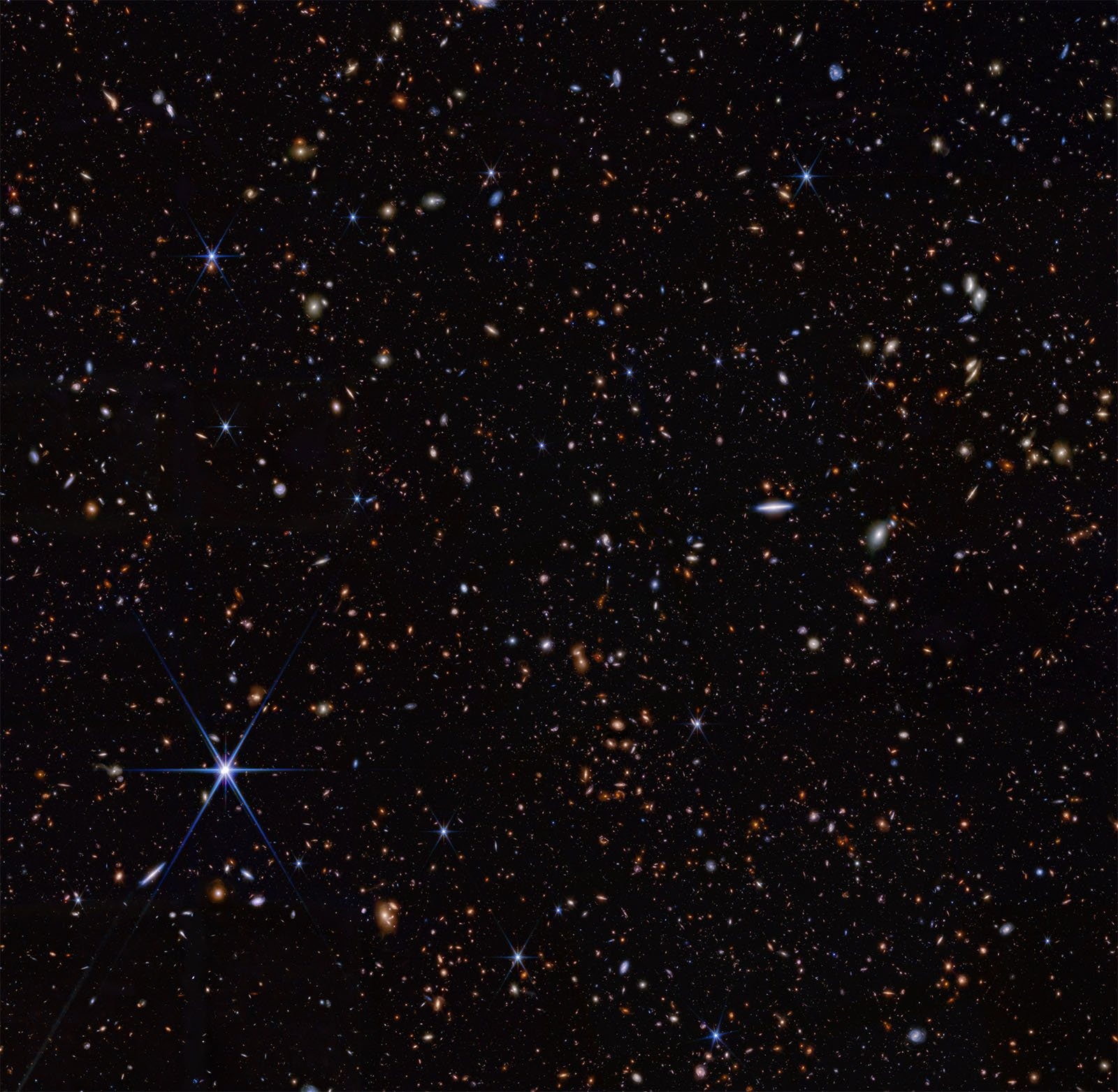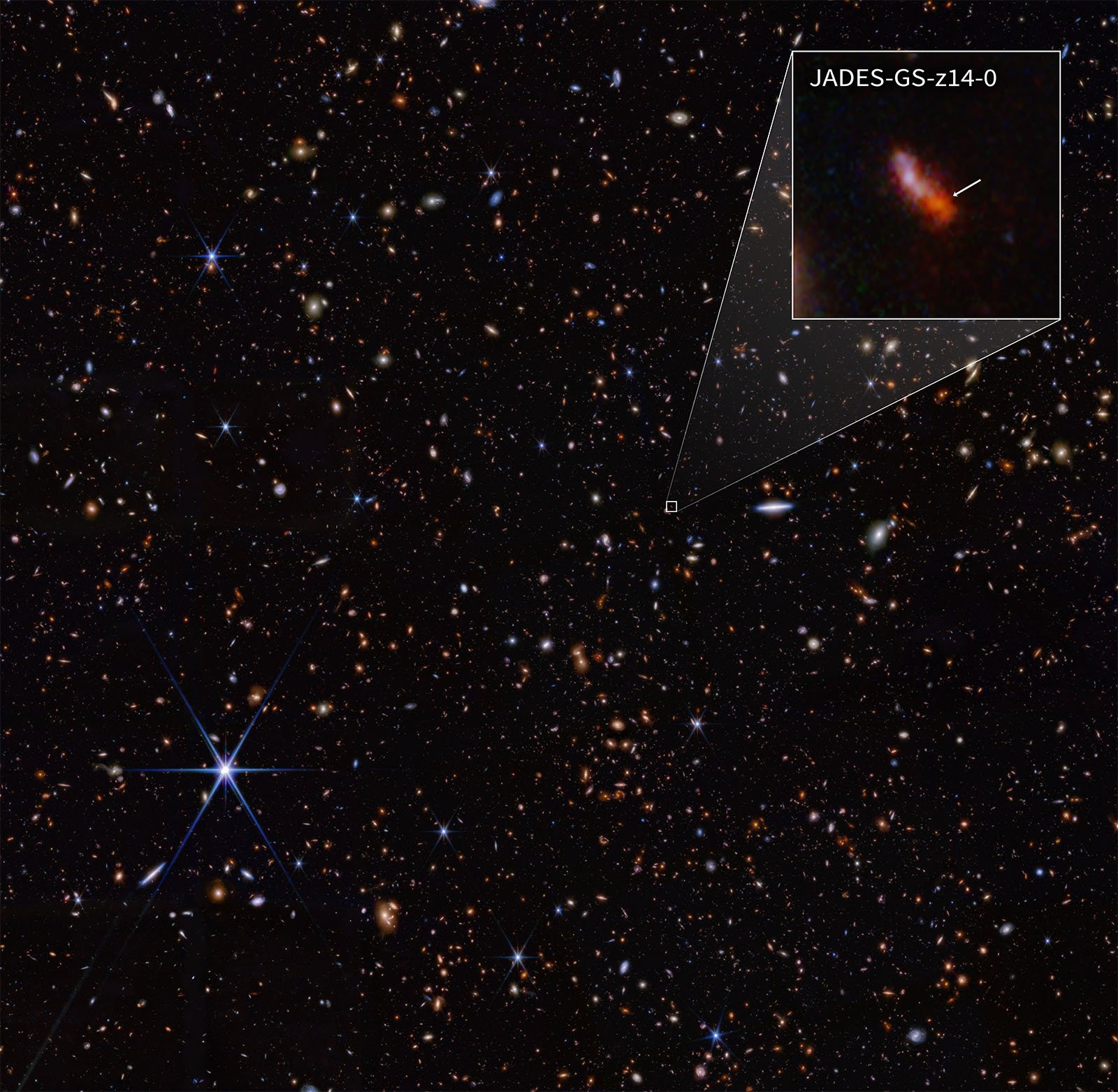The James Webb Space Telescope has discovered the oldest galaxy in the Universe, which has puzzled scientists. The galaxy JADES-GS-z14-0, discovered earlier this year, formed about 300 million years after the Big Bang. That is, it is about 13.8 billion years old. Most strikingly, the galaxy contains a giant halo of new stars around the core that formed at least 90 million years before the time of observation. Scientists wonder how this galaxy managed to form stars just a couple hundred million years after the formation of the Universe.

Current theories claim that galaxies in early space started out small and grew over billions of years as a result of the merging and accretion of gas and dark matter. However, JADES-GS-z14-0 contradicts these theories by being too massive and active for its age.
In a paper published in the journal Nature, the researchers note that the large number of luminous galaxies in the early Universe indicates a rapid evolution of galaxies, which is inconsistent with many standard models. Scientists emphasize the need to revise galaxy formation models to take into account such large and luminous objects early in space history.
The galaxy also contains significant amounts of dust and heavy elements such as oxygen, making it even more amazing and mysterious. This indicates that JADES-GS-z14-0 was already actively creating stars long before its inferred age of 290 million years.

This is not the first time that JWST has detected mature galaxies from the Cosmic Dawn epoch. The 2023 finds revealed several massive galaxies formed 500-700 million years after the Big Bang, contradicting 99% of theoretical predictions altogether. This points to serious gaps in our understanding of the early Universe.
The reasons for the “premature” growth of galaxies remain unknown. Researchers are considering possible explanations, such as earlier formation of supermassive black holes, effects from frequent supernovae, or the influence of dark energy. However, they don’t have definitive answers yet.
With observatories like the JWST Advanced Deep Extragalactic Survey, it is possible that these mysteries will be solved soon, revealing new aspects of cosmic history.
Earlier we reported on how the Milky Way turned out to be 5 billion years older.
According to techspot.com


